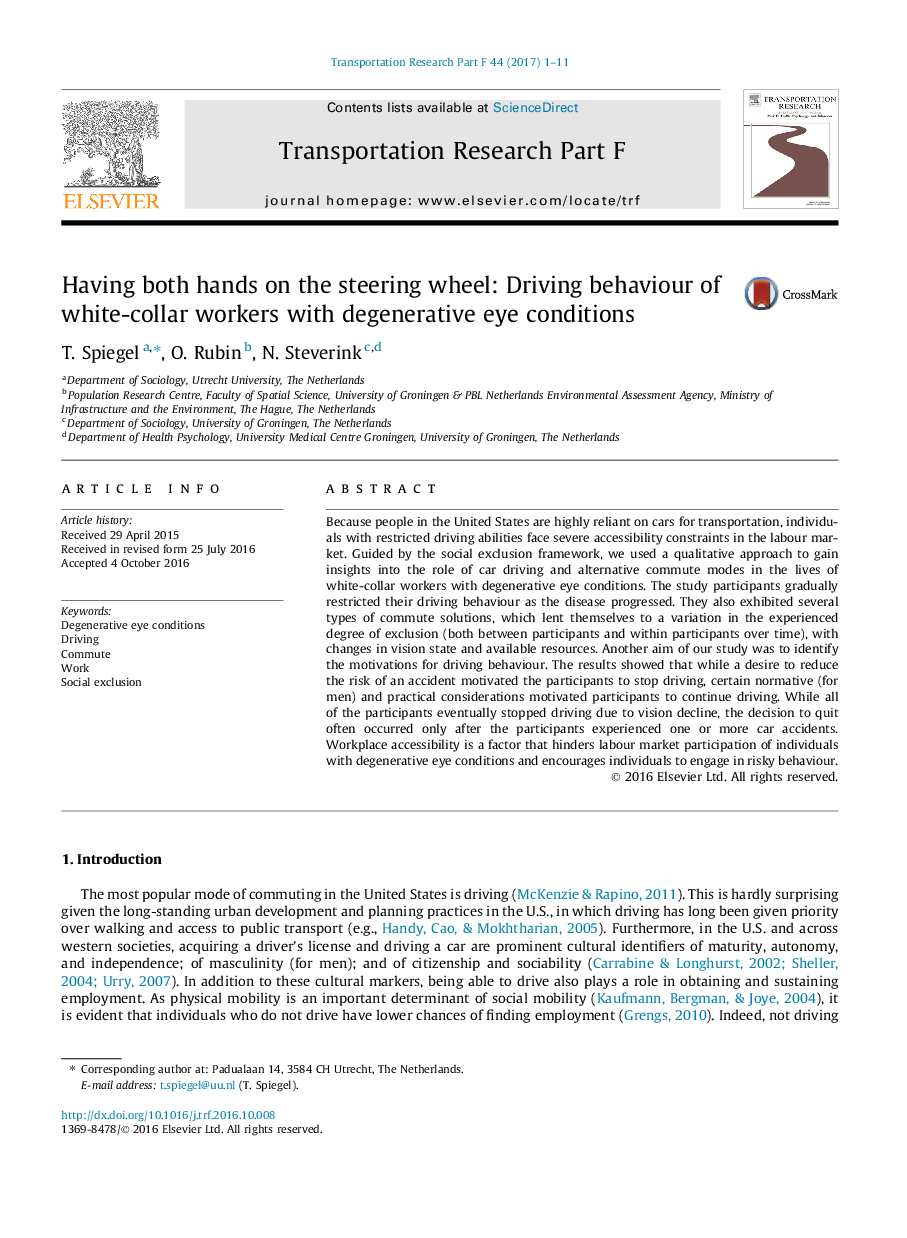ترجمه فارسی عنوان مقاله
داشتن هر دو دست در فرمان: رفتار رانندگی کارگران یقهدار با شرایط دژنراتیو چشم
عنوان انگلیسی
Having both hands on the steering wheel: Driving behaviour of white-collar workers with degenerative eye conditions
| کد مقاله | سال انتشار | تعداد صفحات مقاله انگلیسی |
|---|---|---|
| 102429 | 2017 | 11 صفحه PDF |
منبع

Publisher : Elsevier - Science Direct (الزویر - ساینس دایرکت)
Journal : Transportation Research Part F: Traffic Psychology and Behaviour, Volume 44, January 2017, Pages 1-11
ترجمه کلمات کلیدی
شرایط چشم دژنراتیو، رانندگی، رفت و آمد کار، محرومیت اجتماعی،
کلمات کلیدی انگلیسی
Degenerative eye conditions; Driving; Commute; Work; Social exclusion;
ترجمه چکیده
از آنجا که مردم در ایالات متحده بسیار وابسته به اتومبیل برای حمل و نقل هستند، افراد با توانایی های رانندگی محدود محدودیت های دسترسی شدید در بازار کار است. با توجه به چارچوب جداسازی اجتماعی، ما از یک رویکرد کیفی برای به دست آوردن بینش در مورد نقش رانندگی خودرو و حالت رفت و آمد جایگزین در زندگی کارگران سفید با شرایط دژنراتیو چشم استفاده کردیم. شرکت کنندگان در مطالعه به تدریج رفتار رانندگی خود را به عنوان پیشرفت بیماری محدود کردند. آنها همچنین انواع مختلفی از راه های رفت و آمد را نشان دادند که خود را به تغییر در درجه تجربه محرومیت (بین شرکت کنندگان و درون شرکت کنندگان در طول زمان) با تغییر در وضعیت دید و منابع موجود منصوب کرد. هدف دیگری از مطالعه ما شناسایی انگیزه های رفتار رانندگی بود. نتایج نشان داد که در حالی که تمایل به کاهش خطر تصادف سبب شد تا شرکت کنندگان در رانندگی توقف کنند، برخی از هنجارها (برای مردان) و ملاحظات عملی انگیزه شرکت کنندگان را برای ادامه رانندگی. در حالی که تمام شرکت کنندگان در نهایت به علت کاهش چشمگیر رانندگی را متوقف کردند، تصمیم به ترک آن اغلب پس از وقوع یک یا چند حادثه اتومبیل رخ داد. دسترسی به محل کار یک عامل است که مانع از مشارکت بازار کار افراد مبتلا به شرایط دژنراتیو چشم و تشویق افراد به شرکت در رفتار مخاطره آمیز است.

